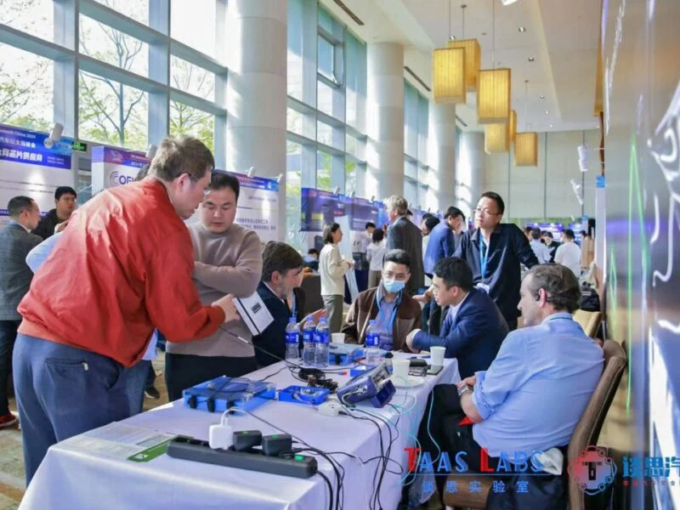KDPOF in Spain has signed a strategic partnership with Hinge Technology in China to solve key technical issues in the industrial application of chiplets for optical communications in vehicles.
Hinge Technology uses transceivers from KDPOF to design integrated optical modules combined with automotive-grade connectors and optical fibre harnesses to design the electrical electronic architecture (EEA).
The two are jointly researching and developing advanced chip-on-panel (COP) packaging technology using chiplets for low-cost, high-reliability optical processors, optical modules, and complementary optical components tailored for automotive optical communications. This initiative aims to ensure production capacity for various automotive optical communications products.
Together they plan to develop and manufacture higher-bandwidth optical communications semiconductors in the future, driving continuous upgrades of EEA architecture for the global automotive industry.
At the recent Automotive Ethernet Summit in Shanghai, China, the two showed their first joint project: a plastic optical fibre camera by Hinge Technology based on the KD1053 IC and integrated KD9351 FOT fibre optic transceiver.
This optical fibre camera can be paired with an optical fibre surround view host, resulting in a high-speed optical communications 360-degree surround view system or a reverse image system. The camera utilizes a 2MP high-quality image sensor for data collection, which is processed and transmitted via plastic optical fiber to the controller for image display or processing. Optical fiber cameras can achieve a stable transmission distance of up to 40 meters and deliver high-definition, real-time images. By comparison, LVDS coaxial cameras have no relay transmission capability and are limited to 15 meters.
Hinge Technology also conducts relevant functional verification on mass-produced vehicle models, including assessing packet loss rates, signal transmission losses, optical module heat dissipation, optical module and optical connector optical path coupling solutions, and optical connection reliability in various road environments. Based on the results of real vehicle verification, it provides feedback on technical issues related to optical chips to KDPOF for resolution.
The KDPOF EVB9351AUT evaluation board provides an extensive platform for testing the KDPOF KD9351 and KD1053 transceivers, designed for the 1000BASE-RHC PHY implementation in automotive optical networks. The KD9351 IC, with dimensions of 7 mm x 8 mm in an LGA-36 package, handles the PMD sublayer of the physical layer. The KD1053, sized at 7 mm x 7 mm in a QFN-56 package, manages both the PCS and PMA sublayers as specified by IEEE Std 802.3bvTM-2017. This setup supports data transfer rates of 1,000 and 100 Mbps.
The board also has an SFP slot, enabling it to serve as a media converter between the optical 1000BASE-RHC port and various SFP modules. These can include 1000/100BASE-T, 100BASE-FX, 1000BASE-S/LX, direct-attach passive twinax cable, and passive serial loopback configurations.
“The widespread application of optical communications in automotive production faces challenges, including harsh environmental conditions and tough requirements for low cost and high reliability,” said Yang Jun, CTO of Hinge Technology. “Our collaboration with the leading upstream supplier, KDPOF, accelerates the industrialization of vehicle communications system products based on 1 to 50 Gbps optical communications.”
In addition to developing optical EEA for vehicle communications, KDPOF and Hinge Technology will extend their partnership to the application of optical communications technology in battery management systems (BMS) for electric vehicles. The companies are collaborating on the development and manufacturing of optical modules and system-on-chips (SoC). They plan to introduce optical-electronic integrated chip packaging technology in regions of China with well-developed automotive industry clusters, establishing FAB facilities capable of packaging chips with bandwidths ranging from 1 to 10 gigabits.



Leave a comment